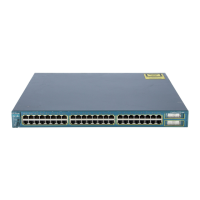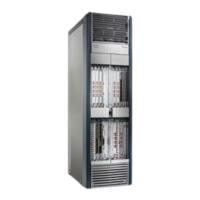1-4
Catalyst 3750-X and 3560-X Switch Software Configuration Guide
OL-25303-03
Chapter 1 Configuring HSRP and VRRP
Understanding HSRP
HSRPv2 has a different packet format than HSRPv1. A HSRPv2 packet uses the
type-length-value (TLV) format and has a 6-byte identifier field with the MAC address of the
physical router that sent the packet.
If an interface running HSRPv1 gets an HSRPv2 packet, the type field is ignored.
Multiple HSRP
The switch supports Multiple HSRP (MHSRP), an extension of HSRP that allows load sharing between
two or more HSRP groups. You can configure MHSRP to achieve load-balancing and to use two or more
standby groups (and paths) from a host network to a server network.
In Figure 1-2, half the clients are configured for Router A, and half the clients are configured for
Router B. Together, the configuration for Routers A and B establishes two HSRP groups. For group 1,
Router A is the default active router because it has the assigned highest priority, and Router B is the
standby router. For group 2, Router B is the default active router because it has the assigned highest
priority, and Router A is the standby router. During normal operation, the two routers share the IP traffic
load. When either router becomes unavailable, the other router becomes active and assumes the
packet-transfer functions of the router that is unavailable.
See the “Configuring MHSRP” section on page 1-10 for the example configuration steps.
Note For MHSRP, you need to enter the standby preempt interface configuration command on the HSRP
interfaces so that if a router fails and then comes back up, preemption restores load sharing.
Figure 1-2 MHSRP Load Sharing
121235
Active router for group 1
Standby router for group 2
Client 1
Router A Router B
10.0.0.1 10.0.0.2
Active router for group 2
Standby router for group 1
Client 2 Client 3 Client 4
